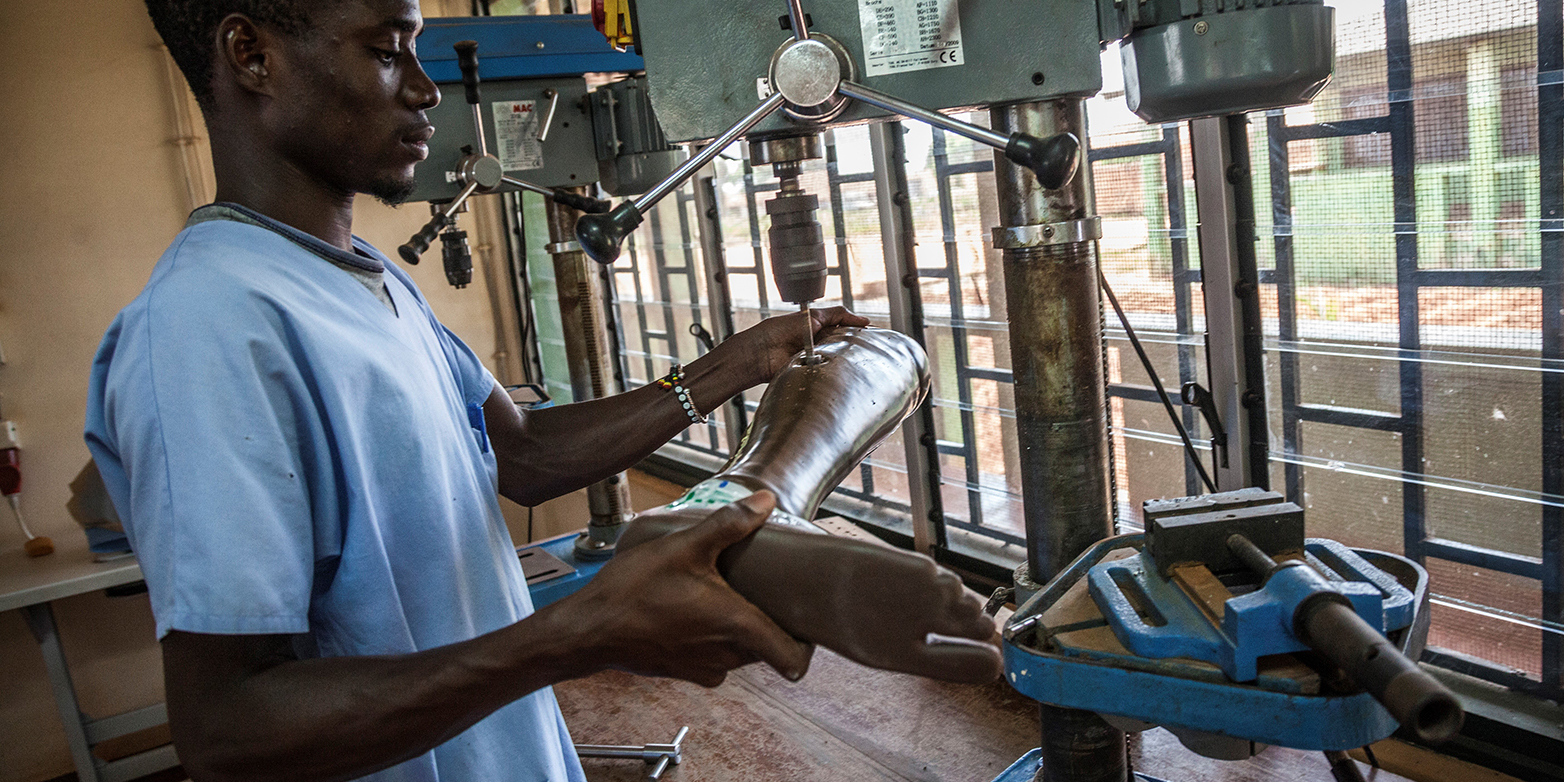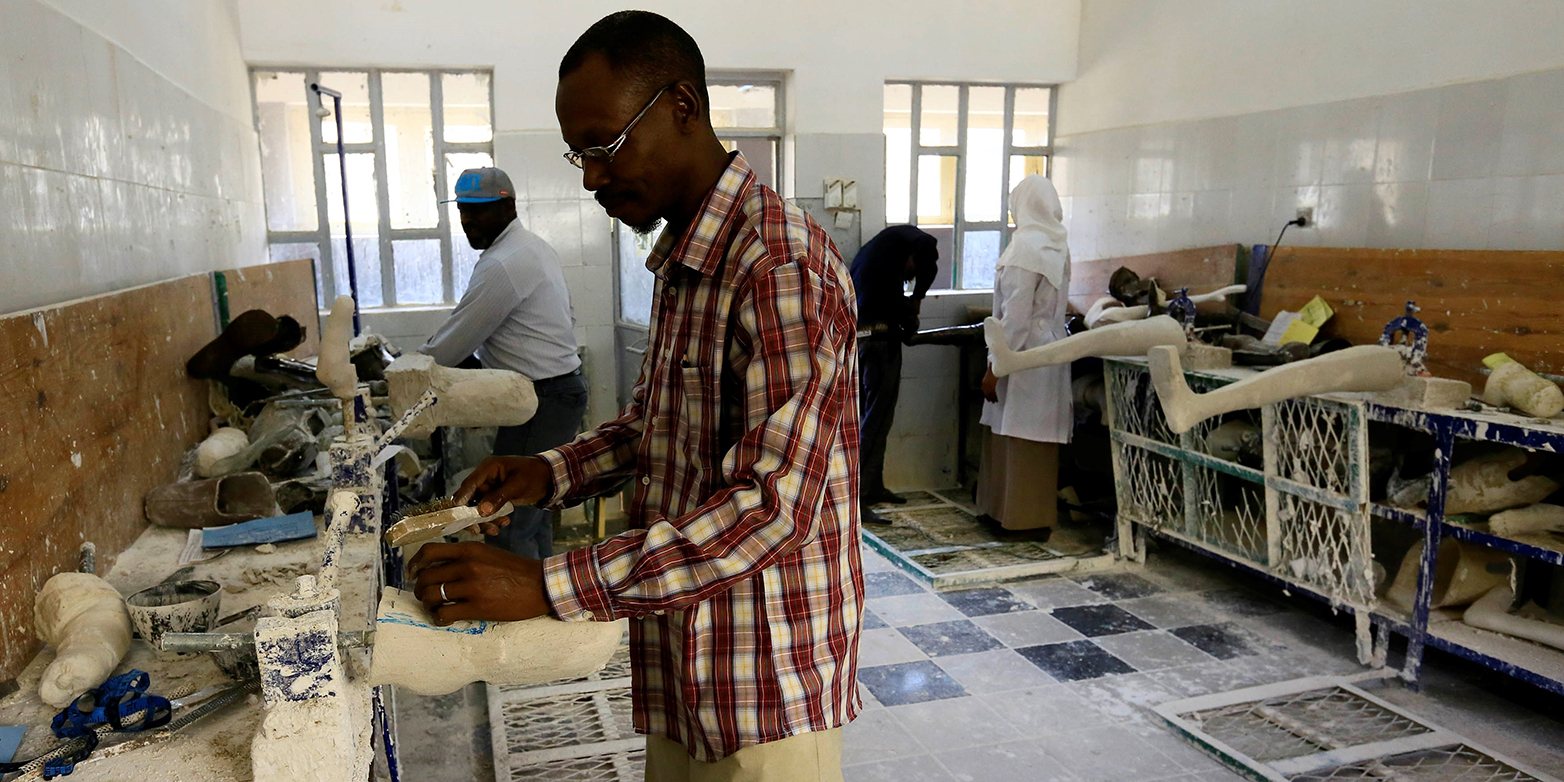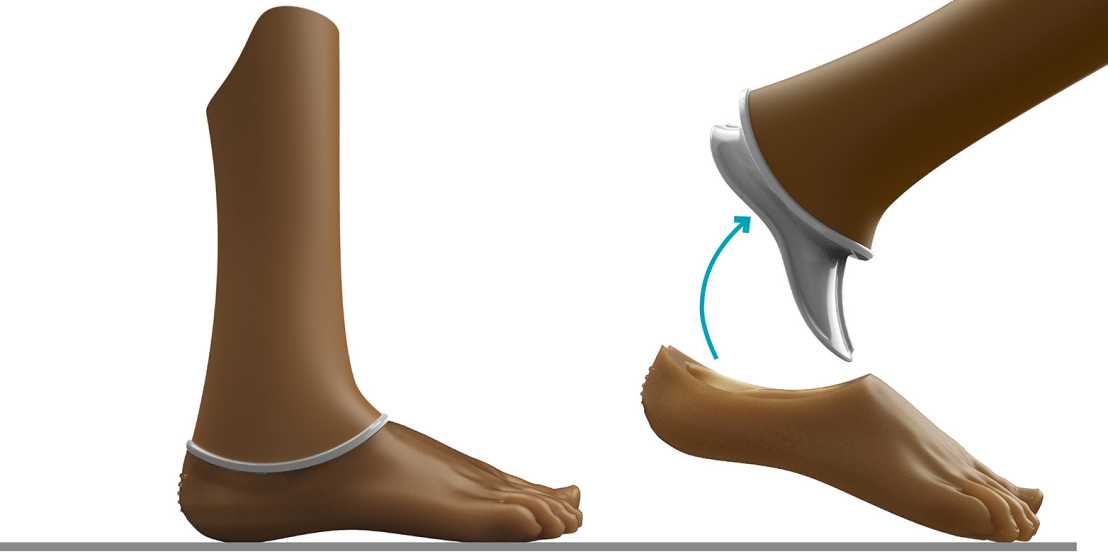Technical know-how meets humanitarian aid
Engineers from the ETH Feasibility Lab are working together with the ICRC to develop a prosthetic leg that allows easy replacement of its wearing part. This prolongs the service life of the prosthesis. In the future, more mine victims could be fitted with a such.

In 2019, at least 5,554 people worldwide became victims of a landmine, according to the latest report by the International Campaign to Ban Landmines. Most of them are civilians in war zones and almost half are still children. More than 2,000 mine victims died and 3,357 were seriously injured. Many of the survivors lost their legs in the explosion – or had to have them amputated due to the injuries. The International Committee of the Red Cross (ICRC) has set up centres in conflict areas dedicated to victims of landmines so that people with limb amputations can be provided with prostheses. In 2018, 12,412 affected people in Pakistan, Iraq, Afghanistan and many other countries received a prosthesis, giving them back a degree of mobility.
Laboratory for innovation in healthcare
At the end of 2019, the ICRC contacted the ETH Feasibility Lab with a fundamental question: How might it be possible to improve the quality of life of prosthesis wearers without increasing the cost of the prostheses? “We’re here precisely to deal with these kinds of practical questions from the healthcare sector,” says Stephan Fox, head of the lab, which is part of ETH Professor Mirko Meboldt’s group. “We want to develop new ideas and test their application in practice at a very early stage of development,” he adds. In collaboration with the Design Technology Lab of ETH and the Zurich University of the Arts (ZHdK), Fox encouraged two Bachelor’s students from the Mechanical Engineering programme at ETH and the Industrial Design programme at the ZHdK, to take part in the project. A kickoff meeting was then held at the beginning of 2020 at an ICRC workshop in La Chaux-de-Fonds.
The ICRC has developed its own prostheses and set up a distribution chain for them. Their prosthetic legs basically consist of two parts: a tube for attaching the prosthesis to the leg stump and a foot for contact with the ground. Made of soft polypropylene, the standardised feet are manufactured in different sizes in a workshop in La Chaux-de-Fonds. From there, they are sent to conflict areas around the world, where local staff care for mine victims in ICRC centres. This is also where the tube for the prosthesis is produced and adapted to the patient’s anatomy. The feet from Switzerland are screwed to the tube on-site, adjusted and then permanently welded on.

Every screw counts
During the kickoff, Fox and the students learned that fitting and adjusting the foot and tube is a very complex and time-consuming task. That is why they first wanted to develop a new system for it. “But we soon realised that this would be far too expensive, because for the ICRC the cost of every additional screw counts,” Fox says. The organisation has set the maximum price for manufacturing prostheses at 250 to 350 dollars per unit and has optimised the entire production process accordingly. He continues: “Our next thought was: if the adjustment procedure is already so complex, then the service life of the prosthesis should be as long as possible.” For transtibial (below-knee) amputations, the entire prosthesis usually has to be replaced after only one year. Dust, heat, moisture and sandstorms all affect the material. The feet are particularly subject to wear because they are in contact with the ground most of the time. To get a replacement, those affected often have to travel a long distance to the ICRC centre.

In light of these considerations, the team developed a simple but effective solution: a system that lets worn feet be replaced independently of the tube. To this end, they designed a keel shaped like a duck’s beak and made of hard plastic, which is attached to the lower end of the prosthetic tube. Instead of welding the feet to the tube, they are simply pulled over the keel and temporarily glued. The idea would be to detach a worn foot from the keel with steam and replace it. “By making the wearing part replaceable, we triple the service life of the prosthesis,” Fox says. Using a 3D printer, the team produced both the new keel and the adapted feet, proving the basic feasibility of the system.
Using the same infrastructure to help more people
“We’ve had really positive feedback from our partners at the ICRC,” Fox says, adding: “They particularly appreciate the fact that the new system is a great fit with their well-established workshop setup.” It is primarily the workshop in La Chaux-de-Fonds that will need to be adapted to allow the large-scale introduction of such prostheses. The staff there would require new injection moulds to produce the keel and feet (both in different sizes). Meanwhile, the ICRC centres in the conflict areas could work with the same tools and simply train their existing staff in the new system. Because the tube would have to be replaced only every three years, the existing ICRC staff could produce around three times as many transtibial prostheses – and thus help additional mine victims. Replacing the foot section is much easier than fabricating a new prosthetic tube. This means it should be possible to convert buses into mobile centres in future, then visit prosthesis wearers in remote villages and replace worn parts on-site.
Discussions are currently underway at the ICRC on how to proceed with the new prosthesis system. The next step would be to develop prototypes for practical use and then have them certified for testing by mine victims. The researchers have already anticipated a few standard tests: for example, they ran a virtual check to see whether the new connection system was stable enough to prevent the prosthetic foot from slipping when weight is placed on it. The results were promising and the team believes that the system meets the criteria for medical devices.
When anticipating challenges to a global rollout of the new system, Fox believes the biggest one is the sometimes adverse local conditions. The prostheses must be able to cope equally well with sand, moisture, heat and cold. And there is another consideration: “Ultimately, our system needs to be at least as comfortable for the wearer as the existing system, ideally even more comfortable,” Fox says. He is now hoping for a positive decision from the ICRC, so that his team can continue to drive development forward in the coming year.